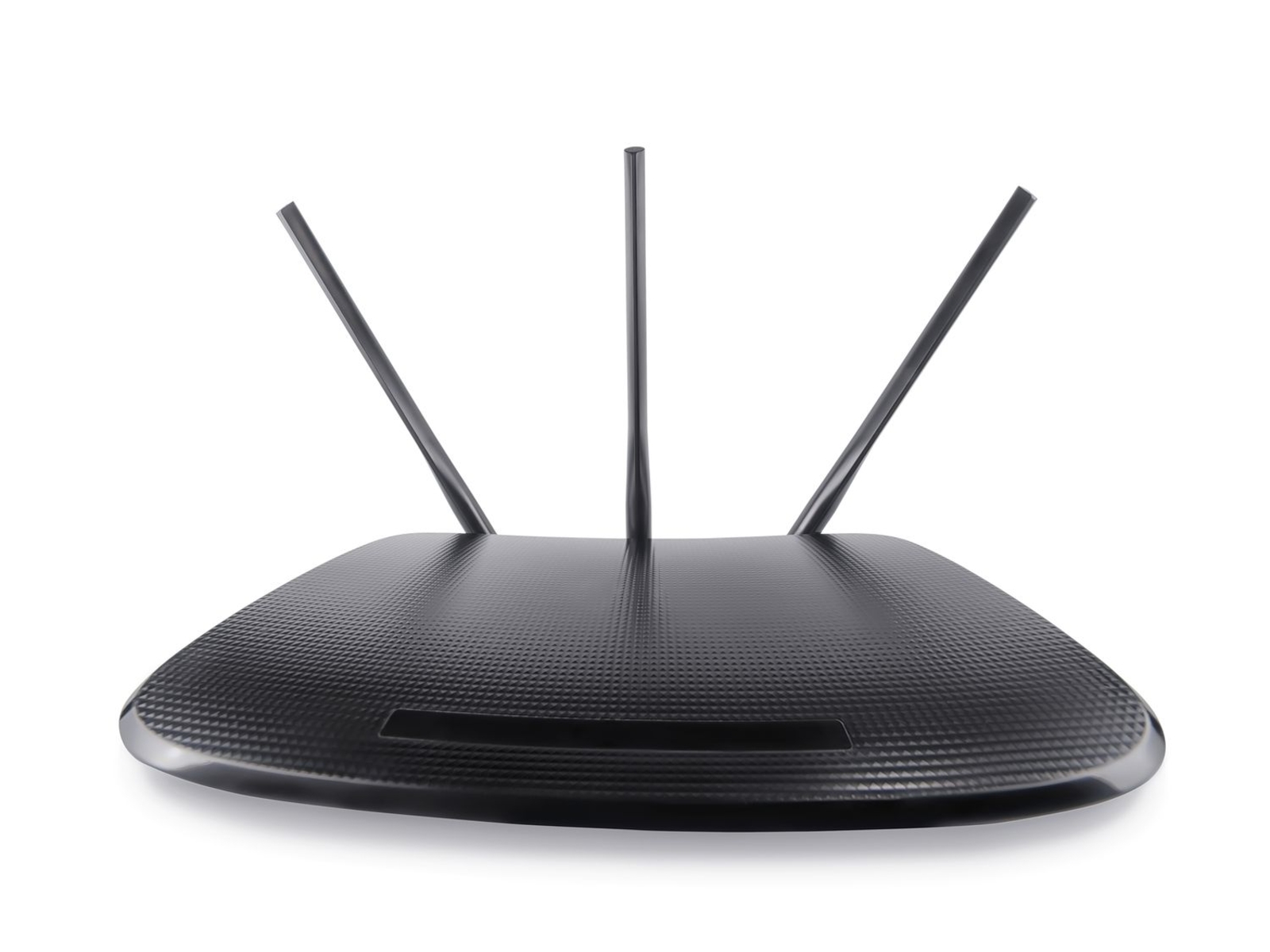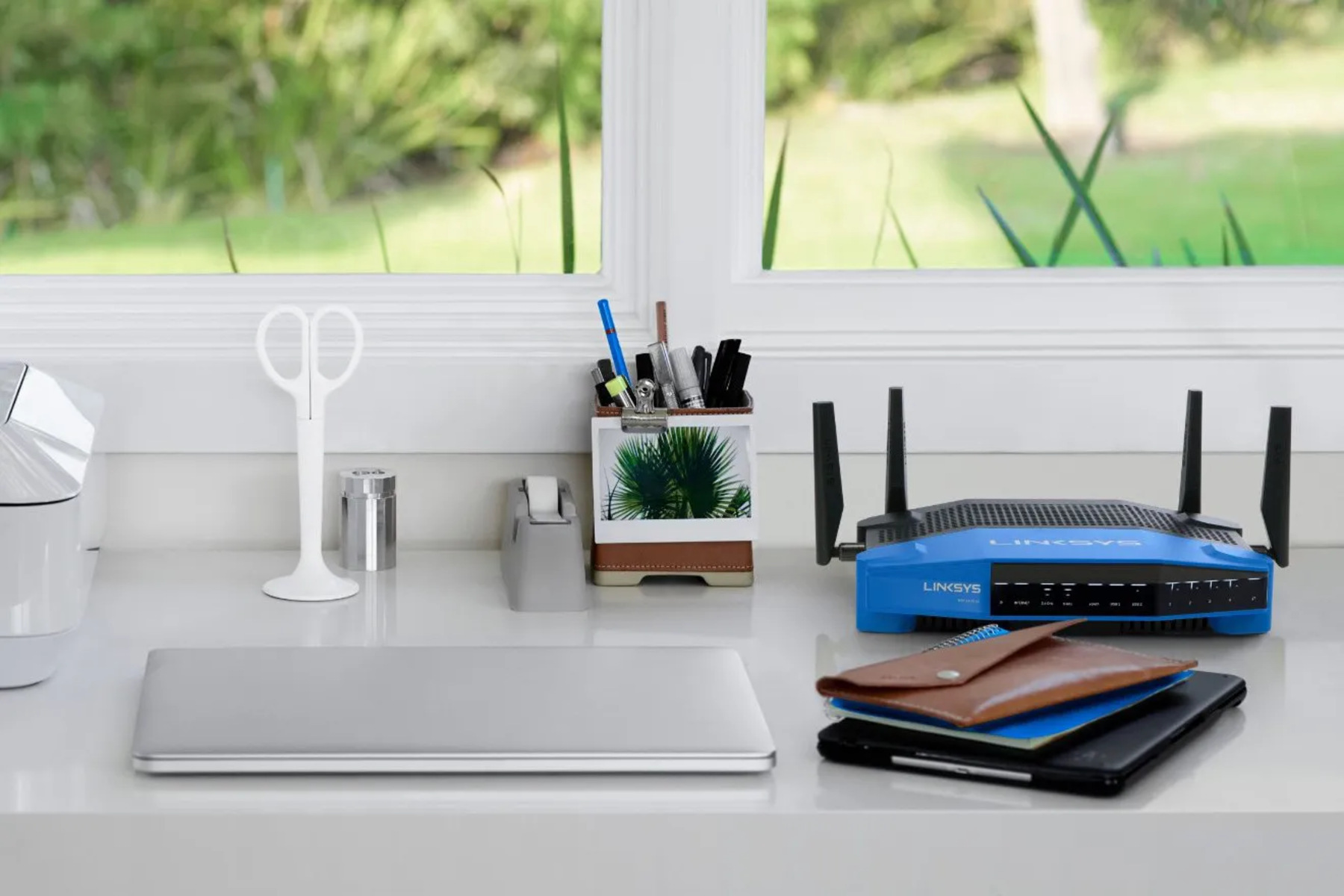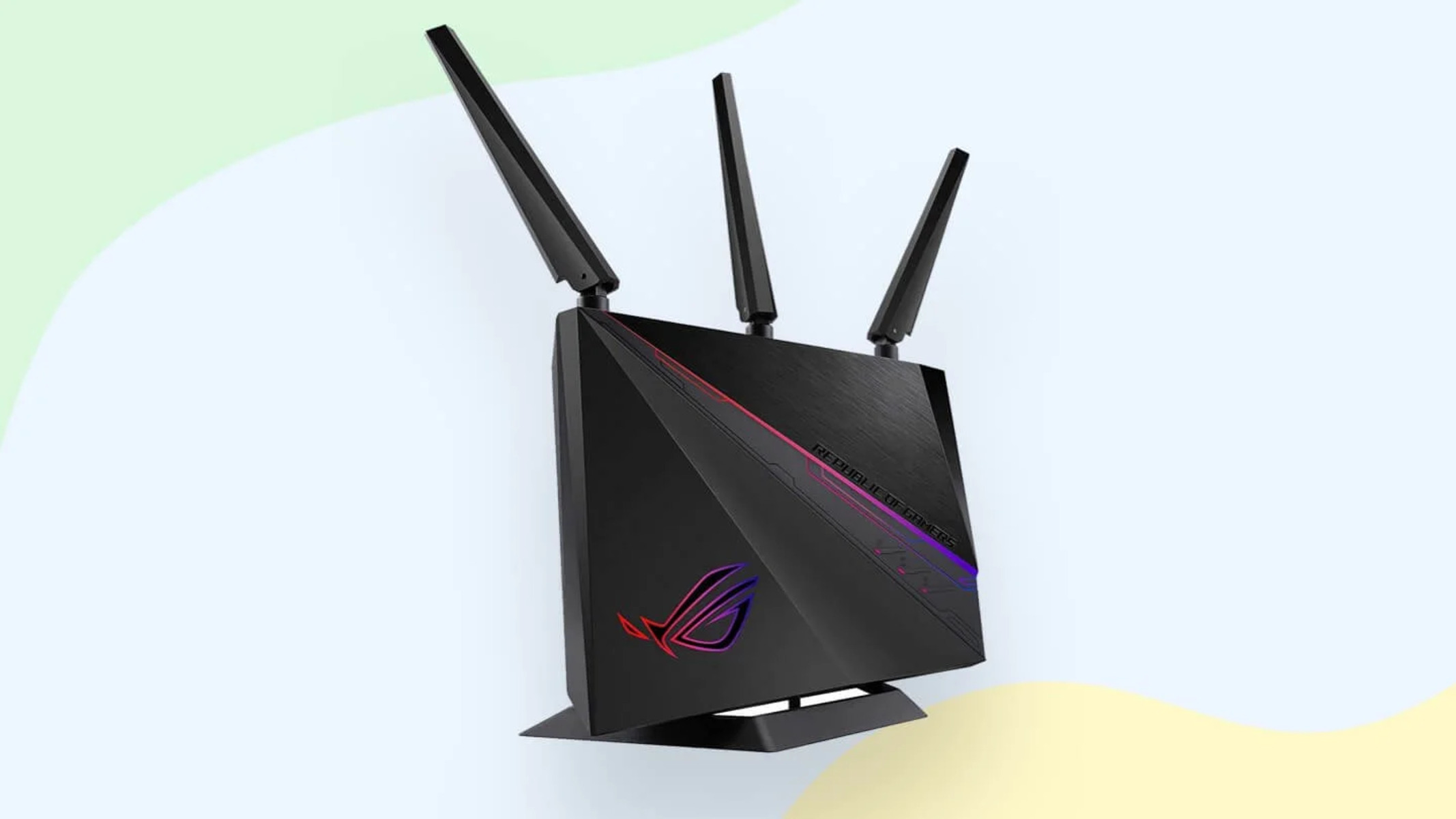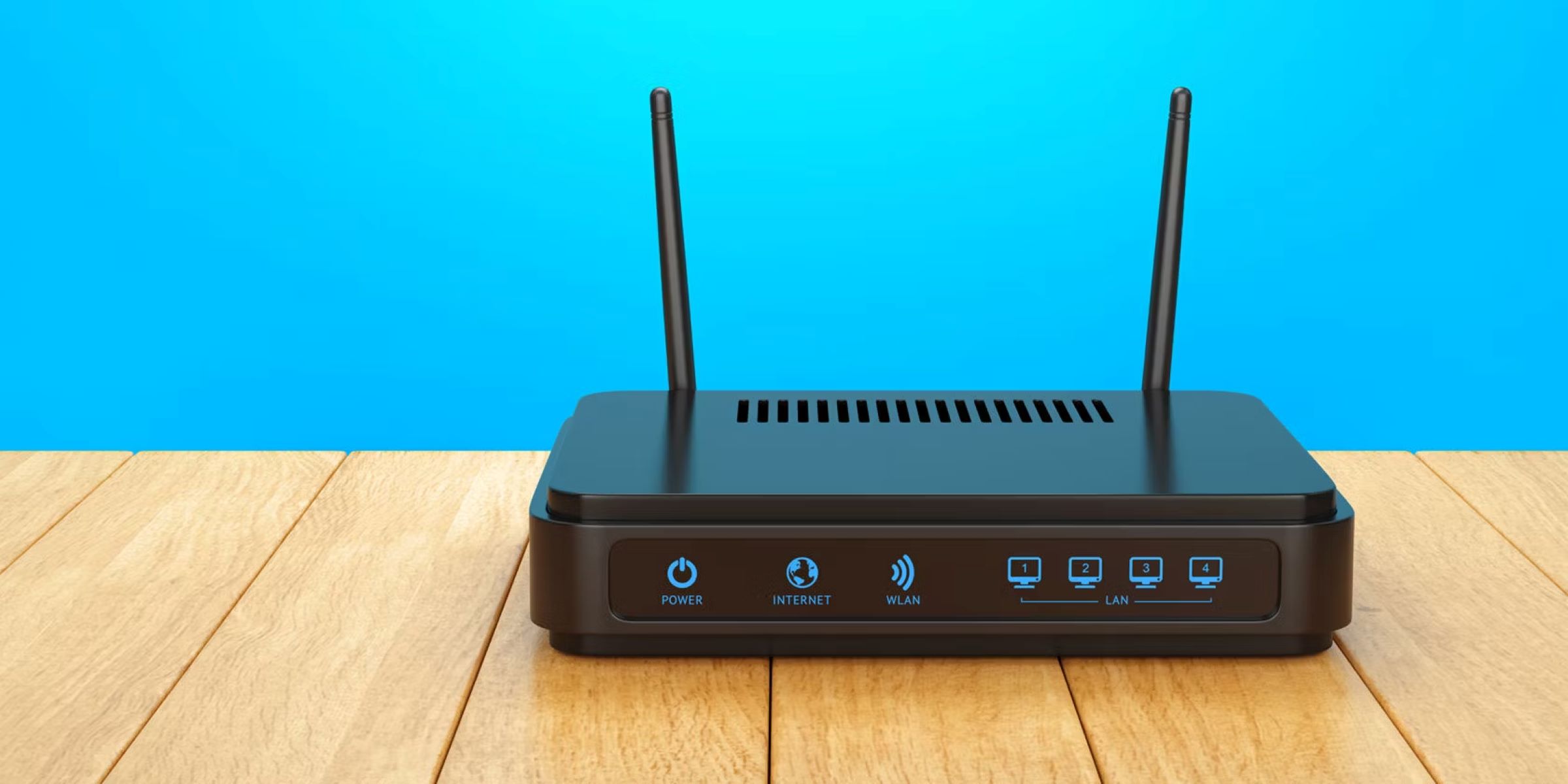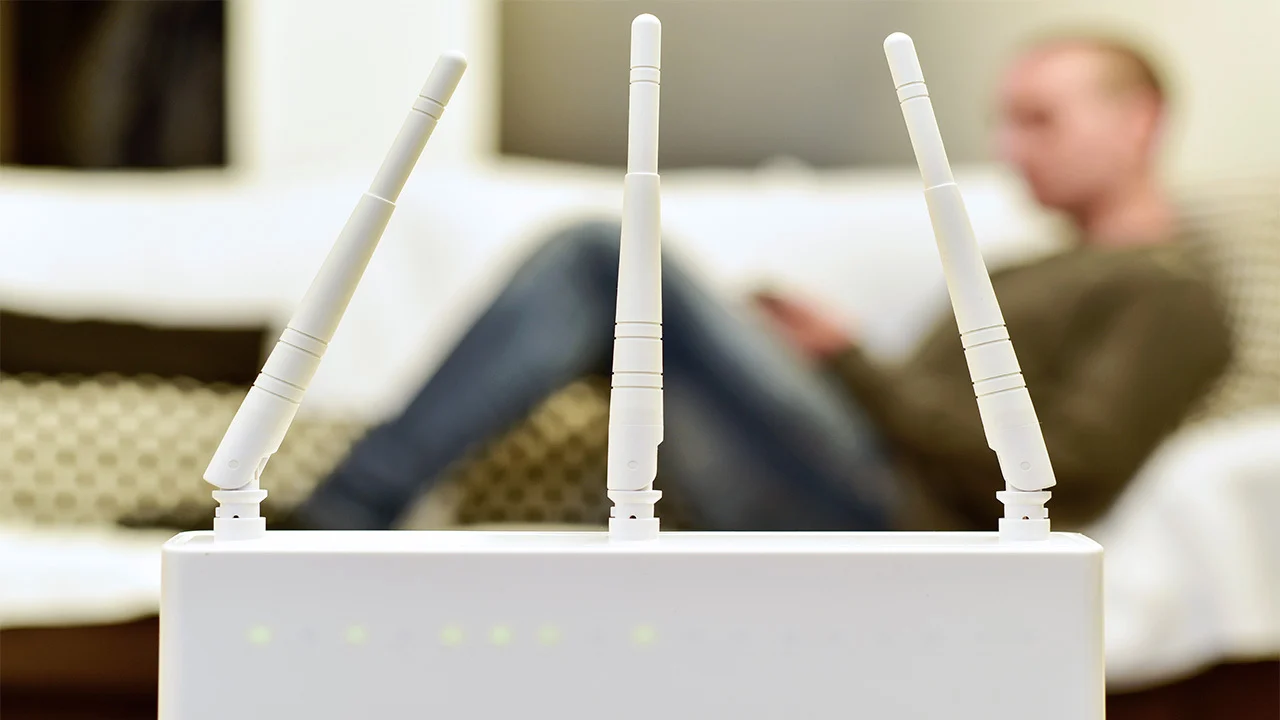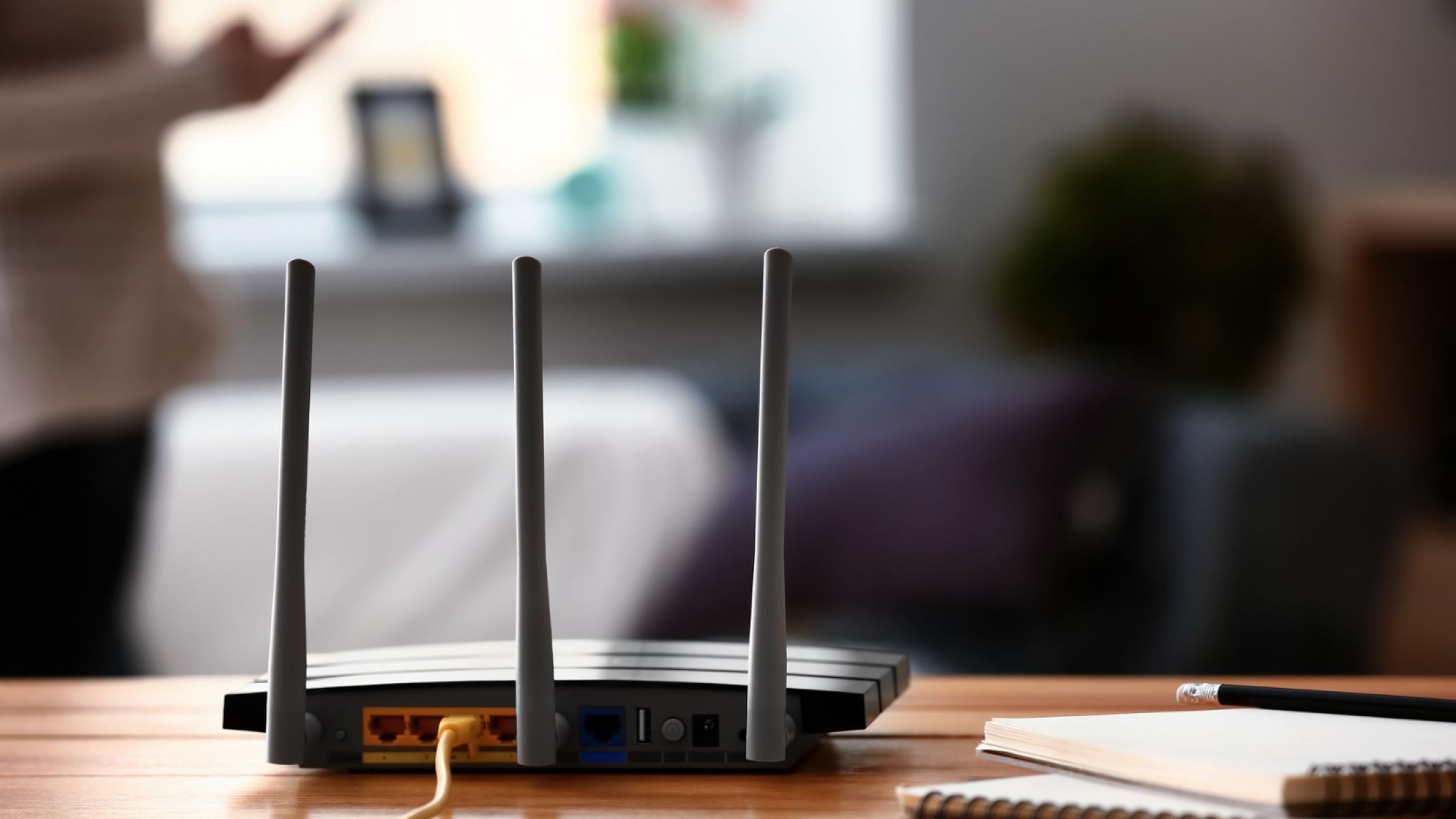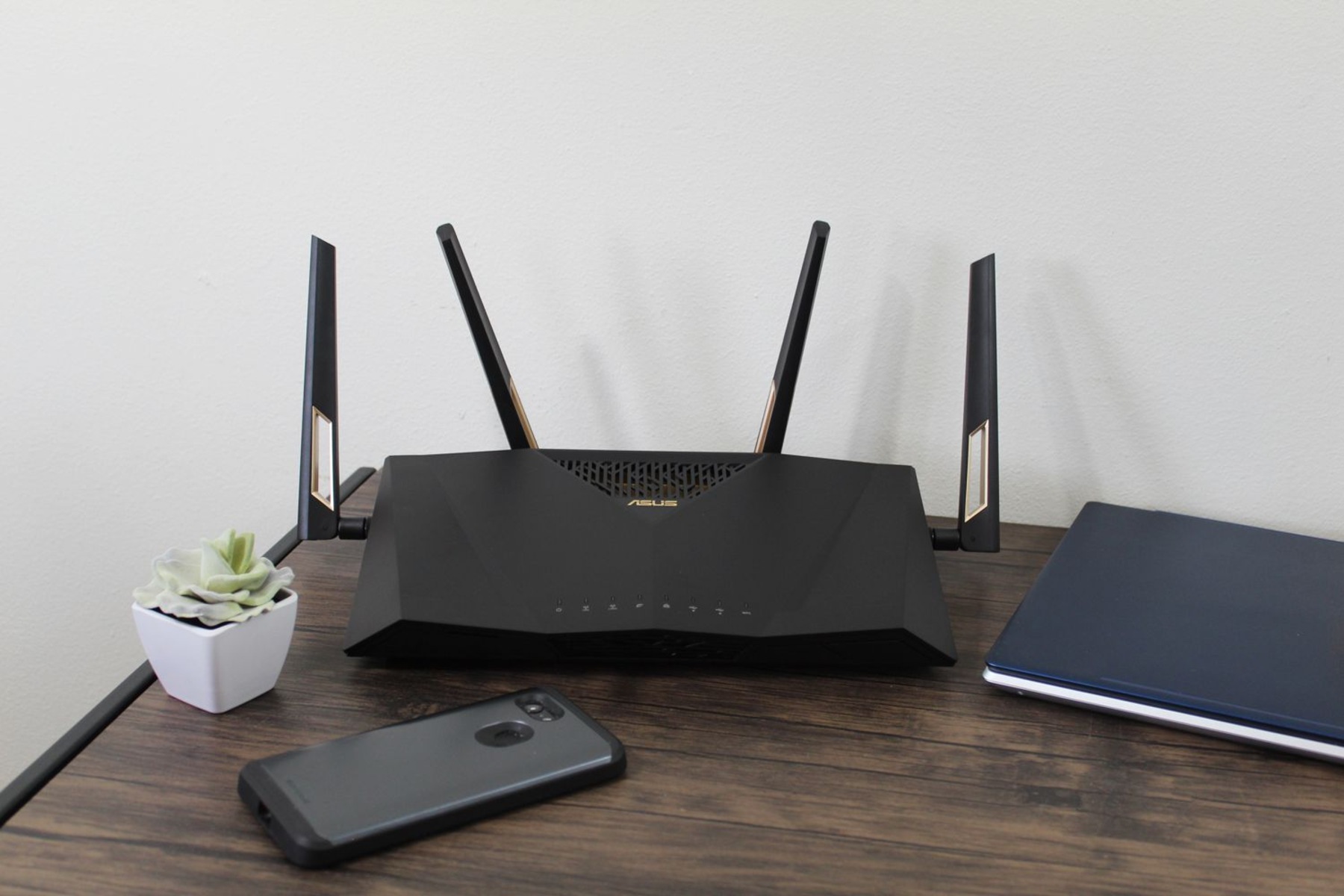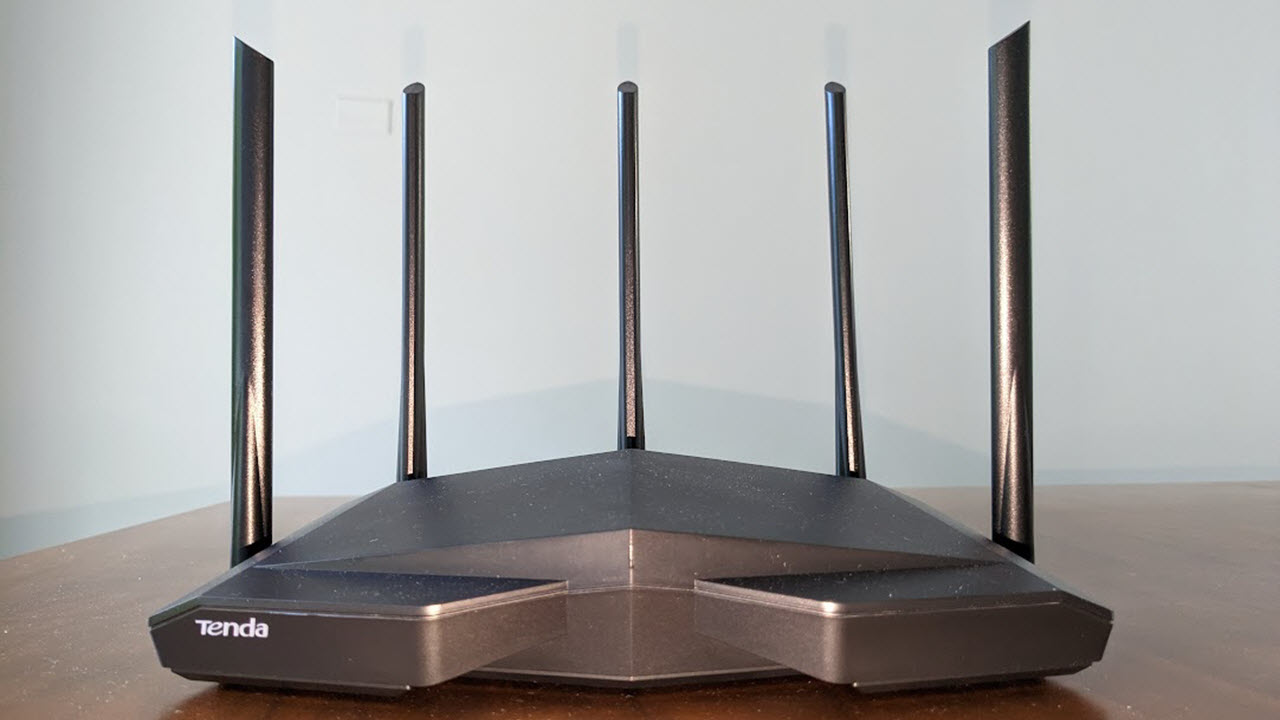Introduction
Welcome to the world of wireless routers! In today’s interconnected world, having a reliable and high-speed internet connection is essential. A wireless router plays a crucial role in ensuring that your devices are connected to the internet wirelessly. However, to maximize the performance of your wireless router, it is important to know how to adjust its antenna.
The antenna on your wireless router is responsible for transmitting and receiving signals between your devices and the router. It is important to note that the position and orientation of the antenna can greatly impact the strength and stability of your Wi-Fi signal. A poorly positioned or improperly oriented antenna can result in weak or intermittent connectivity, slow internet speeds, or limited coverage.
By adjusting the antenna on your wireless router, you can optimize its performance and enjoy a better Wi-Fi experience. In this article, we will explore the different types of antennas used in wireless routers and provide step-by-step guidance on adjusting the position and orientation of the antenna. Additionally, we will share some tips for optimizing your wireless router’s antenna placement to achieve the best possible Wi-Fi coverage throughout your home or office.
Whether you are setting up a new wireless router or struggling with a weak Wi-Fi signal, understanding how to adjust your router’s antenna is an important skill. So, grab your device and let’s dive in to learn how you can fine-tune your wireless router’s antenna for optimal performance.
Why do you need to adjust the antenna on your wireless router?
The antenna on your wireless router plays a vital role in transmitting and receiving Wi-Fi signals. It is responsible for establishing a strong and stable connection between your wireless devices and the router. However, the default position and orientation of the antenna may not always be ideal for your specific environment. Adjusting the antenna can greatly improve the performance of your wireless router in several ways.
Firstly, adjusting the antenna can help optimize the Wi-Fi coverage in your home or office. The position of the antenna determines the direction in which the Wi-Fi signal propagates. By experimenting with different antenna positions, you can improve the coverage in certain areas that may have previously experienced weak or no signal. This is particularly useful for larger spaces or areas with obstructions like walls or furniture.
Secondly, adjusting the antenna can enhance the signal strength of your wireless network. If you notice that your devices struggle to maintain a stable connection or experience slow internet speeds, it could be due to a weak signal. By adjusting the antenna, you can focus the signal in a specific direction, increasing its strength and reducing interference from neighboring networks or electronic devices.
Furthermore, adjusting the antenna can help mitigate signal interference. Wi-Fi signals can be affected by external factors such as other Wi-Fi networks, electronic devices, or physical obstacles. By adjusting the antenna, you can position it away from sources of interference, thereby minimizing the impact on your Wi-Fi signal quality. This can improve the overall stability and reliability of your wireless connection.
Lastly, adjusting the antenna can potentially extend the range of your wireless network. In some cases, you may find that certain areas of your home or office are outside the coverage range of your wireless router. By repositioning the antenna to extend the signal reach, you can ensure that all corners of your space receive a strong and consistent Wi-Fi signal.
In summary, adjusting the antenna on your wireless router is necessary to optimize Wi-Fi coverage, improve signal strength, minimize interference, and potentially extend the range. By fine-tuning the antenna position and orientation, you can enhance the performance of your wireless network and enjoy seamless connectivity throughout your home or office.
What are the different types of antennas used in wireless routers?
Wireless routers utilize various types of antennas to transmit and receive Wi-Fi signals. Each type of antenna has its own unique characteristics and is designed to optimize performance in specific scenarios. Understanding the different types of antennas can help you make informed decisions when adjusting the antenna on your wireless router. Let’s explore some common types of antennas used in wireless routers:
1. Omni-directional Antennas: Omni-directional antennas are the most commonly used antennas in wireless routers. These antennas emit signals in all directions, providing a wide coverage area. They are ideal for use in open spaces or small apartments where there are no major obstructions. The omni-directional antenna ensures that the Wi-Fi signal is evenly distributed throughout the area.
2. High-Gain Antennas: High-gain antennas are designed to enhance the signal strength and extend the range of your wireless network. These antennas focus the Wi-Fi signal in a specific direction, allowing for increased coverage in a particular area. High-gain antennas are ideal for larger homes or offices with multiple floors or rooms, where signals need to penetrate walls or other obstacles.
3. Directional Antennas: Directional antennas are designed to concentrate the Wi-Fi signal in a specific direction. Unlike omni-directional antennas, which emit signals in all directions, directional antennas provide a narrow coverage area but with increased signal strength. These antennas are commonly used in point-to-point connections or in situations where a specific area requires a stronger signal.
4. Internal Antennas: Some wireless routers come with internal antennas that are built-in and not externally visible. These antennas are usually compact and provide sufficient coverage for smaller spaces. Internal antennas offer a sleek and minimalist design, but they may not offer the same coverage and signal strength as external antennas.
5. MIMO Antennas: Multiple-Input Multiple-Output (MIMO) antennas are designed to improve the performance of your wireless network by using multiple antennas. MIMO technology allows for better signal quality, increased data transfer rates, and improved overall reliability. These antennas are commonly found in newer routers that support advanced Wi-Fi standards such as 802.11n, 802.11ac, or 802.11ax.
It is important to note that the type of antenna used in your wireless router may vary depending on the model and manufacturer. Additionally, some routers may feature a combination of different types of antennas to provide optimal coverage and performance.
By familiarizing yourself with the different types of antennas used in wireless routers, you can better understand how adjusting the antenna can impact your Wi-Fi signal. This knowledge will empower you to make informed decisions when optimizing the antenna position and orientation on your wireless router.
How to adjust the position of the antenna on your wireless router
Adjusting the position of the antenna on your wireless router is a simple but crucial step in optimizing your Wi-Fi signal. By following these steps, you can ensure that the antenna is positioned to provide the best coverage and signal strength:
1. Identify the antenna: Depending on the model of your wireless router, you may have one or more external antennas. Locate the antenna(s) on your router, usually found at the back or on the sides. If your router has internal antennas, check the manufacturer’s instructions for guidance on adjusting their position.
2. Experiment with antenna placement: Begin by placing the antenna in a vertical position. This is the default position and often provides satisfactory coverage. However, if you find that certain areas have weaker signals or dead spots, consider adjusting the antenna to a horizontal or diagonal position. Experiment with different orientations to find the position that offers the best coverage throughout your space.
3. Consider elevation: The height at which you position the antenna can impact signal strength and coverage. Higher elevation can provide better coverage for multi-story buildings, while lower elevation may be beneficial for single-story homes or smaller spaces. Try positioning the antenna at different heights to find the optimal balance between signal strength and coverage area.
4. Avoid obstructions: Keep the antenna away from physical obstructions such as walls, furniture, or metal objects. These objects can interfere with the Wi-Fi signal and reduce its strength. To optimize signal propagation, make sure the antenna has a clear line of sight to the devices you want to connect.
5. Try different positions: If you are still not satisfied with the coverage or signal strength, experiment with moving the router itself to a different location. Sometimes, a small adjustment in the router’s position can significantly improve the Wi-Fi signal. Repeat the steps above to adjust the antenna position accordingly.
6. Test and monitor: After adjusting the antenna position, perform a speed test or check the signal strength on your devices to assess the improvement. Keep an eye on the Wi-Fi performance over time and make further adjustments if needed.
Remember, every environment is different and may require unique adjustments. What works for one person may not work for another. Be patient and willing to experiment until you find the optimal position for your antenna to achieve the best Wi-Fi coverage and signal strength.
How to adjust the orientation of the antenna on your wireless router
In addition to adjusting the position, aligning the orientation of the antenna on your wireless router is another important step in optimizing your Wi-Fi signal. By following these steps, you can ensure that the antenna is oriented to provide the best coverage and signal strength:
1. Identify the antenna orientation: Take note of the default orientation of your wireless router’s antenna(s). In most cases, the antennas are oriented vertically by default. However, consult the manufacturer’s instructions or the router’s user manual to confirm the default orientation.
2. Adjust the antenna tilt: Start by tilting the antenna slightly in different directions. This step is particularly important if your wireless router has multiple antennas. Experiment with tilting the antennas in various angles, such as 45 degrees or 90 degrees, to find the orientation that delivers the best signal strength throughout your space.
3. Consider the device location: Take into account the device locations in your home or office that require the strongest Wi-Fi signal. If your devices are mostly located in one area, direct the antenna towards that specific zone. By aligning the antenna with the devices’ location, you can improve the signal reception and overall connectivity.
4. Avoid interference: Pay attention to potential sources of interference, such as nearby electronic devices, appliances, or metal objects. Adjust the orientation of the antenna to minimize the effects of interference. For example, if you notice that a neighboring device is causing signal interference, reorient the antenna in a way that reduces the impact of that interference.
5. Test and assess: After adjusting the antenna orientation, test the Wi-Fi signal strength on your devices to determine the improvement. Run speed tests or conduct real-world usage scenarios to assess the impact of the antenna orientation adjustments. Make further tweaks if necessary to achieve the desired signal strength and coverage.
6. Consider adaptive technologies: Some modern routers may come equipped with adaptive technologies, such as beamforming or smart antennas. These technologies automatically adjust the antenna’s orientation based on the detected device location or signal strength. If your router supports these features, enable them to enhance the Wi-Fi performance without the need for manual adjustments.
Remember that the optimal antenna orientation may vary depending on your specific environment and the devices you are using. It’s essential to experiment with different orientations and monitor the impact on signal strength and coverage. By fine-tuning the antenna’s orientation, you can ensure a reliable and high-performing Wi-Fi connection throughout your home or office.
Tips for optimizing your wireless router’s antenna placement
Adjusting the position and orientation of your wireless router’s antenna is crucial for maximizing its performance. Here are some additional tips to help you optimize the placement of your router’s antenna:
1. Centralize the router: Place your wireless router in a central location within your home or office. This allows for more even distribution of the Wi-Fi signal throughout the space, minimizing potential dead zones or areas with weak signal coverage.
2. Elevate the router: Position your router at an elevated level, such as on a shelf or mounted on a wall. This can help improve signal propagation and minimize interference from obstacles on the ground.
3. Keep away from obstructions: Avoid placing your router near physical obstructions like thick walls, metal objects, or electronic devices that can interfere with the Wi-Fi signal. Keep the router clear of any potential obstacles to ensure optimal signal transmission and reception.
4. Minimize interference: Position your router away from other wireless devices, especially those operating on the same frequency band. Cordless phones, baby monitors, and other wireless devices can interfere with your Wi-Fi signal. Keep the router away from such devices to reduce the risk of signal interference.
5. Avoid proximity to appliances: Large appliances like microwaves, refrigerators, or washing machines can emit electromagnetic interference that can degrade Wi-Fi signal quality. Keep your router away from these appliances or position it in a way that minimizes the impact of such interference.
6. Use Wi-Fi analyzer tools: Utilize Wi-Fi analyzer tools or smartphone apps to identify areas with weak signal coverage or high levels of interference. These tools provide insights into signal strength, channel congestion, and overlapping networks, helping you make informed decisions about antenna placement and channel selection.
7. Consider external antennas: If your router allows, consider using external high-gain antennas. These antennas offer better range and signal strength compared to built-in antennas. External antennas can be positioned and oriented for optimal signal coverage, especially in larger spaces or environments with challenging physical layouts.
8. Regularly monitor and adjust: Wi-Fi signals can be affected by changes in the environment or the addition of new devices. Regularly monitor signal strength and performance and make adjustments to the antenna placement as needed to maintain optimal Wi-Fi coverage.
Remember, finding the ideal antenna placement may require some trial and error. Be patient and willing to experiment with different positions and orientations to achieve the best possible Wi-Fi signal throughout your home or office. By following these tips, you can optimize your wireless router’s antenna placement and ensure a reliable and high-speed Wi-Fi connection for all your devices.
Conclusion
Optimizing the position and orientation of the antenna on your wireless router is a critical step in maximizing the performance of your Wi-Fi network. By adjusting the antenna, you can improve signal coverage, enhance signal strength, minimize interference, and ensure a stable and reliable connection for all your devices.
In this article, we discussed why adjusting the antenna is necessary and explored the different types of antennas commonly used in wireless routers. We also provided step-by-step guidance on adjusting the position and orientation of the antenna, along with tips for optimizing the placement of your router’s antenna.
Remember to experiment with different positions and orientations to find the optimal configuration for your specific environment. Factors such as the layout of your space, the presence of obstacles, and the location of your devices can all impact the effectiveness of your antenna adjustments.
Regularly monitor the signal strength and performance of your Wi-Fi network, and make adjustments as needed to maintain optimal coverage and performance. Keep in mind that technology and networking needs can change over time, so you may need to revisit and readjust your antenna placement periodically.
By taking the time to properly adjust the antenna on your wireless router, you can enjoy a strong and reliable Wi-Fi signal throughout your home or office. Whether you are streaming videos, online gaming, or simply browsing the web, a well-optimized antenna will ensure a seamless online experience on all your wireless devices.
So, grab your router, follow the guidelines provided, and start fine-tuning your antenna placement to unlock the full potential of your Wi-Fi network. Say goodbye to weak signals and dead zones, and say hello to uninterrupted connectivity and lightning-fast speeds.







